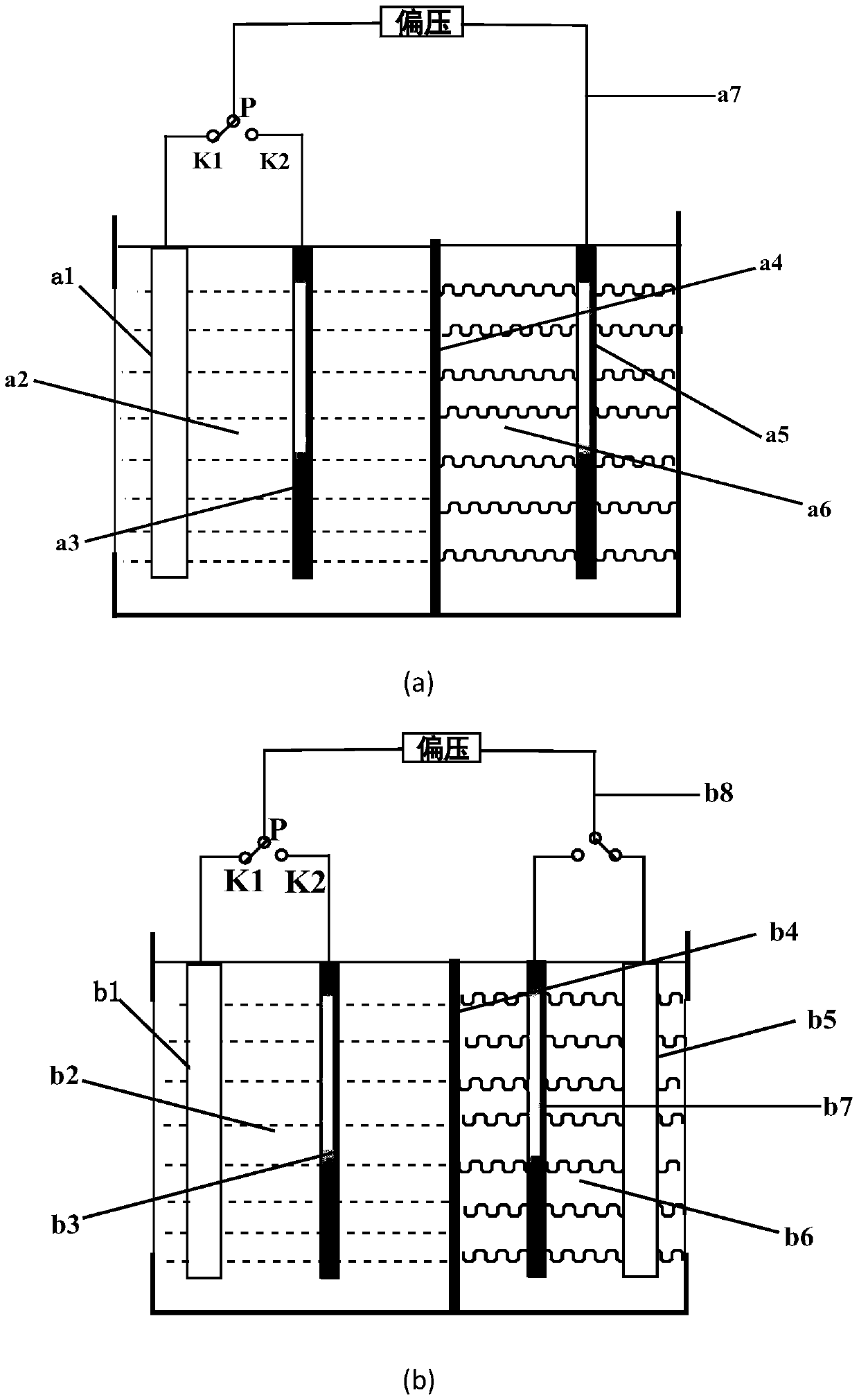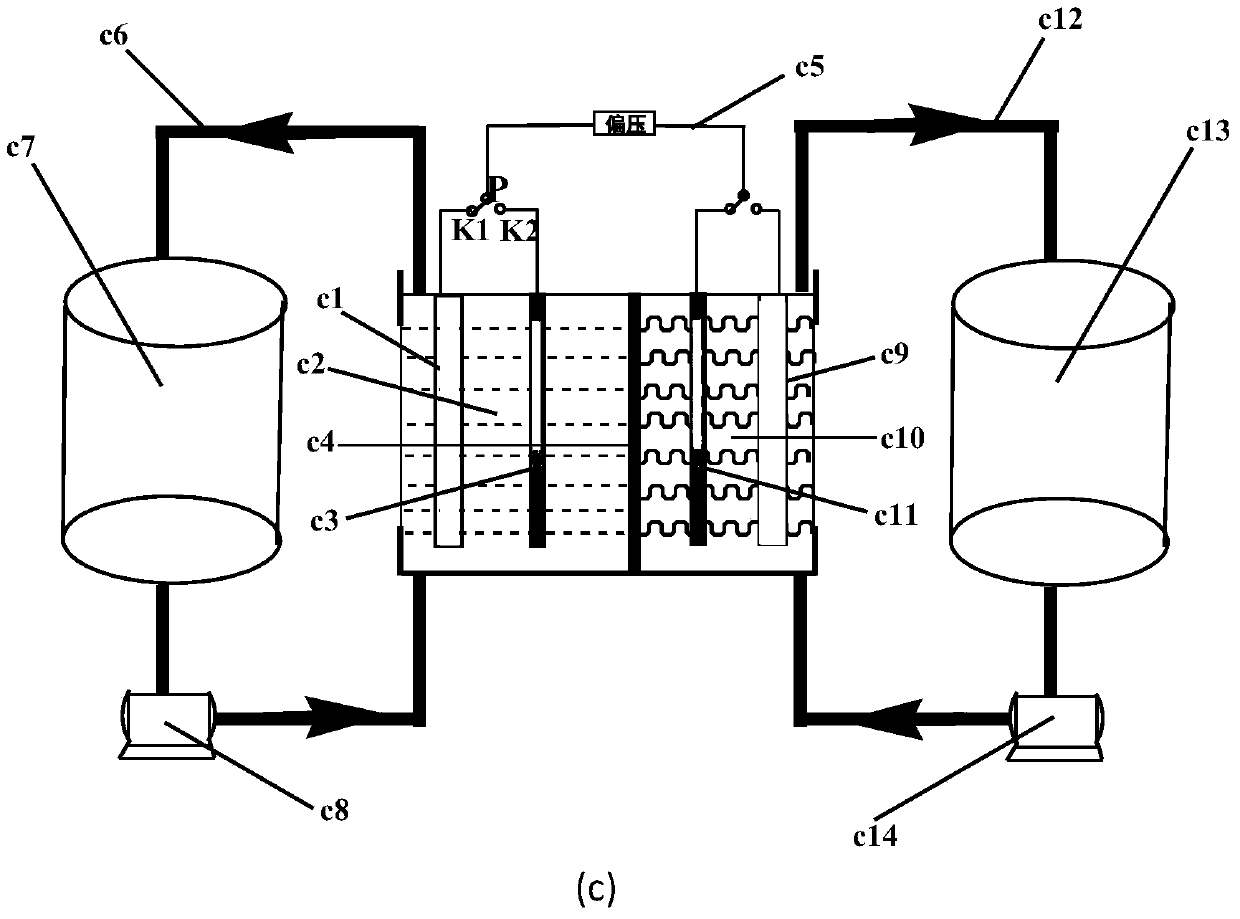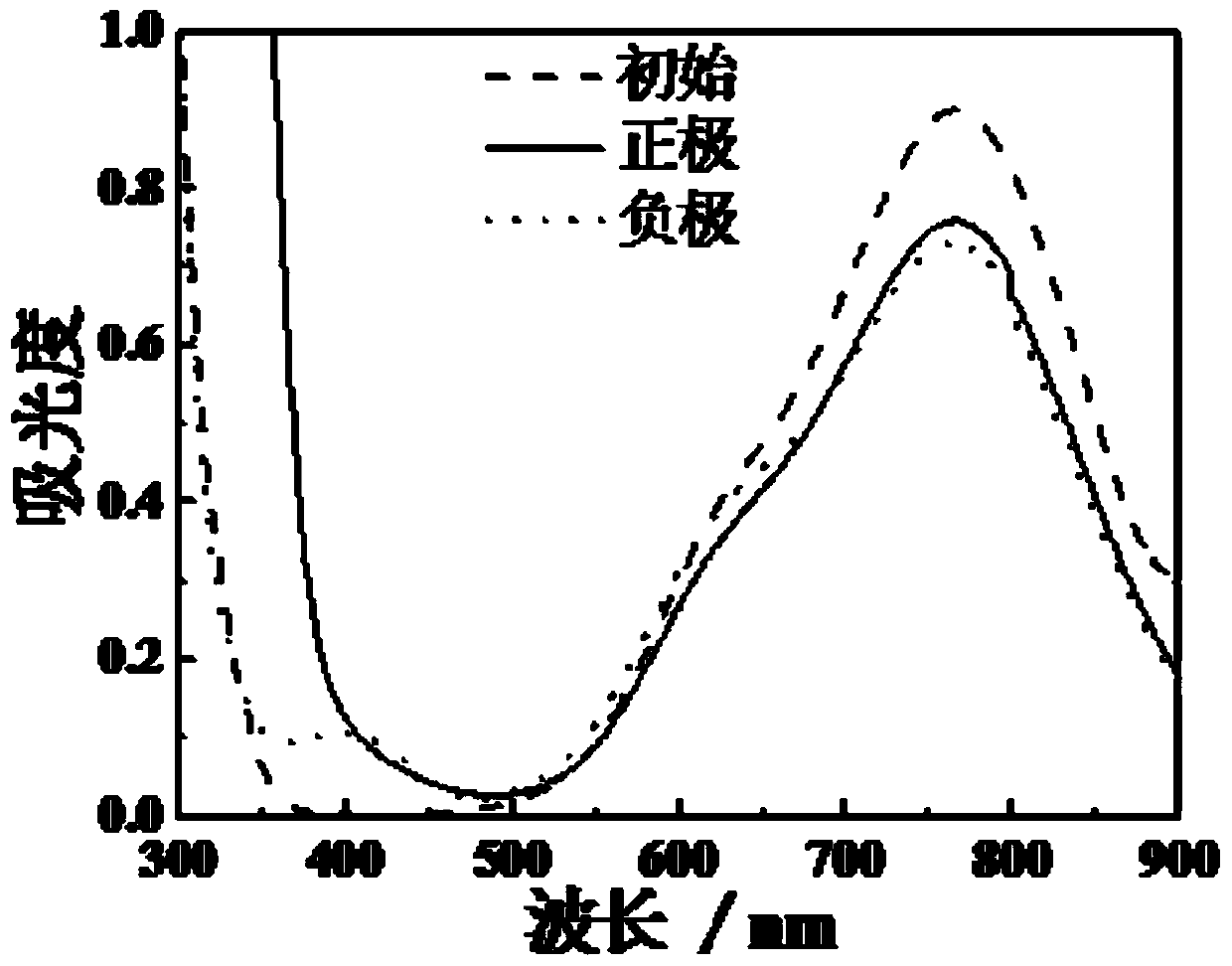A photoelectrochemical flow energy storage battery using vanadium compounds as active materials
An active material, photoelectrochemical technology, applied in electrical components and other directions, can solve the problems of cross-contamination of electrolytes, expensive electrodes, and low battery discharge power.
- Summary
- Abstract
- Description
- Claims
- Application Information
AI Technical Summary
Problems solved by technology
Method used
Image
Examples
Embodiment 1
[0040] Using FTO as a conductive substrate, WO was prepared by hydrothermal method 3 Photoanode: use graphite plate as current collector, mix carbon nanotubes, acetylene black and PVDF to prepare carbon nanotube counter electrode.
[0041] Weigh an appropriate amount of vanadyl sulfate and dissolve it in sulfuric acid solution to prepare the electrolyte of the battery, wherein VOSO 4 The concentration of sulfuric acid is 0.05mol / L, and the concentration of sulfuric acid is 0.1mol / L.
[0042] Add 10mL 0.05mol / L VOSO to the positive and negative reaction chambers 4 +0.1mol / L H 2 SO 4 Electrolyte, the positive and negative electrolytes are separated by nafion 115 membrane; the photoanode and saturated calomel electrode are placed in the electrolyte of the positive reaction chamber, and the carbon nanotube counter electrode is placed in the electrolyte of the negative reaction chamber. With the photoanode in the positive reaction chamber as the working electrode, the saturated...
Embodiment 2
[0044] TiO was produced by anodic oxidation 2 Photoanode; carbon felt as counter electrode. Add 10mL 0.04mol / L VOSO to the positive and negative reaction chambers 4 +0.08mol / L H 2 SO 4 Electrolyte, the positive and negative electrolytes are separated by nafion 115 membrane; the photoanode, carbon felt counter electrode and saturated calomel electrode are placed in the electrolyte of the positive reaction chamber, and the other carbon felt counter electrode is placed in the negative reaction chamber in the electrolyte. with TiO 2 The photoanode was used as the working electrode, the saturated calomel electrode was used as the reference electrode, and the carbon felt in the negative reaction chamber was used as the counter electrode. 2 The light intensity is used to illuminate, and the battery is charged at a constant potential of 0.4V (vs. SCE), and the charging time is 1h. In the dark state, the carbon felt in the positive and negative reaction chambers is connected to t...
Embodiment 3
[0046] Prepare TiO by anodic oxidation 2 Photoanode; with graphene oxide as the counter electrode.
[0047] Add 10mL 0.04mol / L VOSO to the positive and negative storage tanks 4 +0.08mol / L H 2 SO 4 Electrolyte, the positive and negative chambers of the battery are respectively connected to the external positive and negative electrolyte storage tanks through pipelines, and the mechanical pump drives the electrolyte to circulate between the battery chamber and the storage tank to form a photoelectrochemical liquid flow energy storage Battery. The photoanode, the graphene oxide counter electrode and the saturated calomel electrode are placed in the electrolyte in the positive reaction chamber, and the other graphene oxide counter electrode is placed in the electrolyte in the negative reaction chamber. with TiO 2The photoanode was used as the working electrode, the saturated calomel electrode was used as the reference electrode, and the graphene oxide in the negative reaction ...
PUM
| Property | Measurement | Unit |
|---|---|---|
| area | aaaaa | aaaaa |
| area | aaaaa | aaaaa |
| current efficiency | aaaaa | aaaaa |
Abstract
Description
Claims
Application Information
 Login to View More
Login to View More - R&D
- Intellectual Property
- Life Sciences
- Materials
- Tech Scout
- Unparalleled Data Quality
- Higher Quality Content
- 60% Fewer Hallucinations
Browse by: Latest US Patents, China's latest patents, Technical Efficacy Thesaurus, Application Domain, Technology Topic, Popular Technical Reports.
© 2025 PatSnap. All rights reserved.Legal|Privacy policy|Modern Slavery Act Transparency Statement|Sitemap|About US| Contact US: help@patsnap.com



